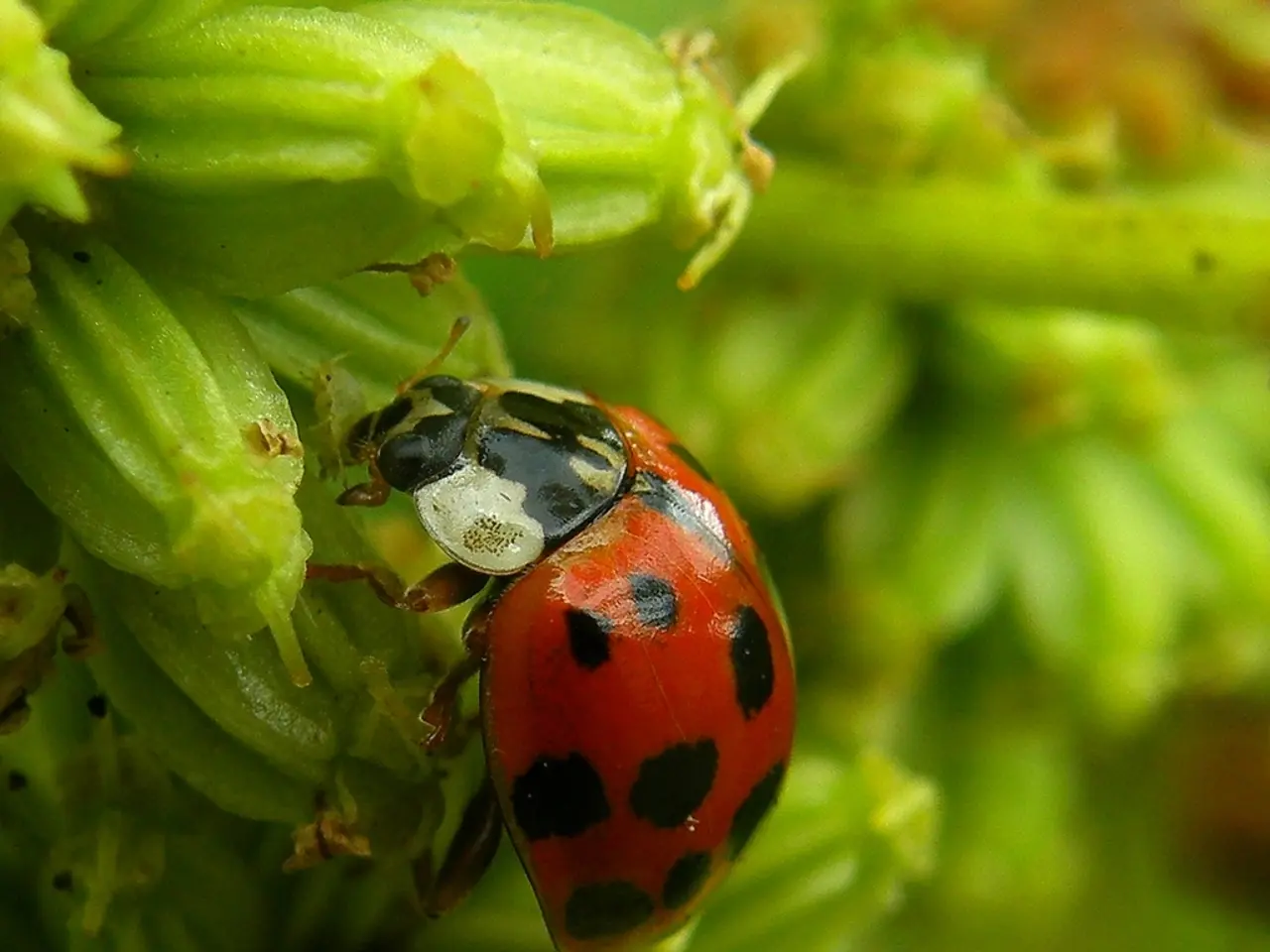Employed the Pre-Release Shooting mode of Nikon Z8 camera to click moving butterflies in mid-air.
In the captivating world of wildlife photography, the Nikon Z8 camera stands out as a reliable companion for capturing high-quality butterfly sequences. Here's a step-by-step guide to help you make the most of this versatile device.
First, it's essential to activate the back-button focus, enabling the Pre-Release Capture mode. This feature frees the shutter button for firing without refocusing delay, ensuring you don't miss a beat during a butterfly's erratic flight.
Next, adjust the AF tracking settings to suit the subject's motion. Set "Blocked Shot AF Response" to "Quick (1)" and "Subject Motion" to "Erratic" to help maintain focus on the flying butterfly.
The Nikon Z8 boasts a high frame rate—up to 120 frames per second—which allows you to capture multiple sharp images in sequence, increasing the chance of successful shots.
To anticipate the butterfly's flight path and timing, study its behaviour. Observing the typical takeoff direction can provide valuable insights for framing your shots.
For stability, employ a sturdy tripod and consider in-body and lens vibration reduction to maintain sharpness at lower ISO settings, ensuring high image quality.
The Nikon Z8's advanced autofocus and high-speed capture capabilities are further leveraged by these settings and techniques.
For those who don't wish to invest in an interchangeable-lens system, the Nikon P1100 offers a viable alternative for capturing stunning wildlife images, including butterflies.
It's important to note that butterflies are very sensitive to changes in light. Therefore, it's crucial to adjust your camera settings accordingly to ensure optimal lighting conditions.
When editing your butterfly images, a soft, black brush can be used to paint through to the butterflies on the layers below, enhancing the overall quality of your images.
Fast-flying butterflies, such as skippers and hairstreaks, can be captured at 60fps, providing ample opportunities for capturing detailed sequences of wing motion.
By following these steps and techniques, you'll be well on your way to capturing stunning butterfly flight sequences with the Nikon Z8. Happy shooting!
[1]: Source: Nikon USA - Nikon Z8 Camera Guide [2]: Source: Digital Camera World - Nikon Z8 Review [3]: Source: Photography Life - Nikon Z8: A Comprehensive Review and Guide
- To maximize the potential of the Nikon Z8 in astrophotography, consider using its Pre-Release Capture mode with the back-button focus activation for smooth star trails and Milky Way shots.
- The versatility of the Nikon Z8 extends to macro photography, where its high-speed capture capabilities and advanced autofocus can yield exceptional close-up images.
- For portrait photography, experiment with various lenses, such as a wide-aperture prime or telephoto zoom, to achieve beautiful bokeh and isolate the subject from the background.
- In video mode, the Nikon Z8's 4K resolution, high frame rate, and advanced video features offer an opportunity to create engaging wildlife documentaries.
- Mirrorless cameras, including the Nikon Z8, are popular choices among photography enthusiasts and professionals for their compact design, versatility, and efficient focus systems.
- In addition to wildlife photography, the Nikon Z8 excels at landscape and urban photography, capturing stunning scenes with its high dynamic range and rich color reproduction.
- As you explore the world of video and macro photography with the Nikon Z8, take advantage of online tutorials and reviews to refine your techniques and learn from the experiences of other photographers.
- A drone with a compatible camera gimbal, such as the DJI Mavic Air 2, can be a valuable addition to a wildlife photographer's arsenal, allowing for unique perspectives and capturing footage that would otherwise be impossible.
- The Nikon Z8's high-speed shooting capabilities make it an ideal camera for capturing high-quality, sharp sequences of wildlife at fast motion, such as birds in flight or foxes chasing prey.
- Technology continues to advance in the field of photography, with innovations such as Artificial Intelligence (AI)Super Resolution Zoom, 8K time-lapse videos, and advanced mirrorless cameras significantly impacting the way photographers work and create.




